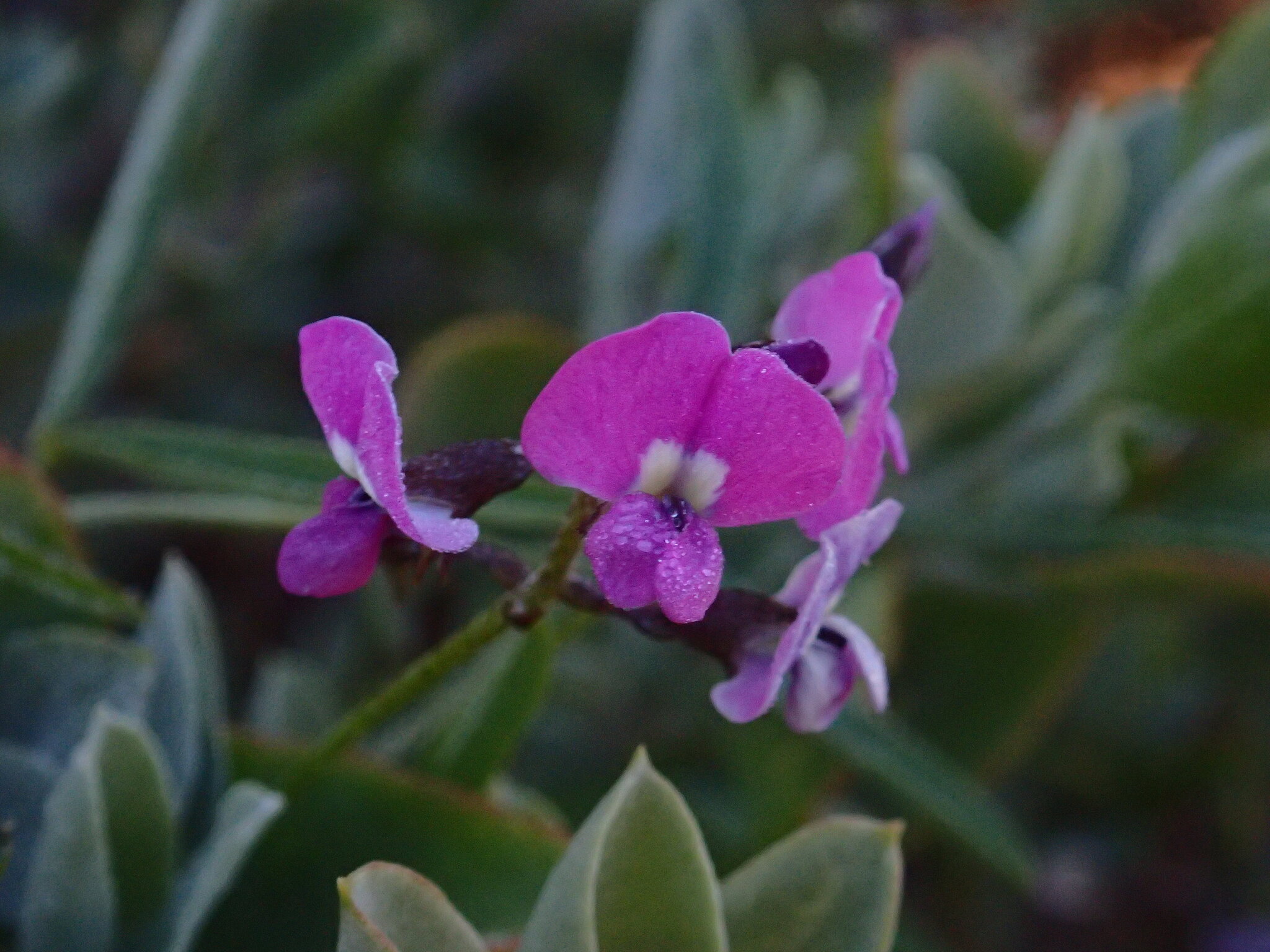
Greek glykys — sweet, referring to the sweet-tasting leaves and roots of some species.
Perennial, mostly climbing or trailing herbs. Leaves alternate, pinnate or divided into 3 leaflets, the terminal one usually the largest; stipules small and soon shed. Flower clusters axillary, rarely of 1 flower. Closed (cleistogamous) flowers occur in the lower leaf axils of most species. Petals white, blue or purplish pink, stamens united except for, mostly, 1 free upper stamen. Fruit pod oblong to linear, cylindrical or flattened.
Grown as a climber with interesting flowers and foliage.
About 18 species from Pacific Islands, E Asia and Australia (15 species).
Seed or cuttings.
G. max (L.) Merr., Soyabean, is one of the world's most important sources of protein and oil. 12 cultivars had been granted PBR in Australia to 1999. The young sprouts are eaten fresh and the beans are processed to produce soy milk, bean curd and cheese as well as soy sauce (fermented) and Worcestershire sauce and a coffee substitute when roasted. A meal is produced for livestock feed, fibres, textiles etc., while a flour is used in bakery, cereals and meat products.The fresh plants are used for silage, fodder and green manure. It is not known in the wild.
Trailing plants with blue or purplish flowers; leaves palmately trifoliate.
Hermann (1962), Hymowitz &Newell (1981).
Source: (2002). Fabaceae. In: . Horticultural Flora of South-eastern Australia. Volume 3. Flowering plants. Dicotyledons. Part 2. The identification of garden and cultivated plants. University of New South Wales Press.
